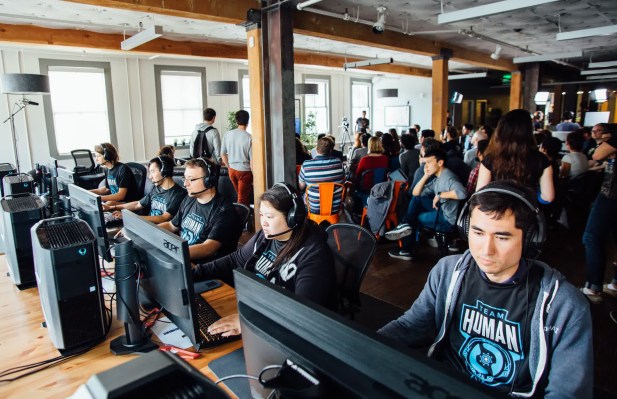[ad_1]

Artificially intelligent systems taking on human competitors is a grand tradition of computer science; thankfully, we’re still in the cute stages that don’t feel quite like War Games yet. For its part, OpenAI has been trying its hand at Dota 2 competitive play, and its bots are starting to win against some skilled opponents under certain conditions.
The Elon Musk co-founded venture is aiming to raise awareness for where AI technologies are now and how the tech industry can promote safe advances that benefit everyone in the future. While playing an unabashedly nerdy video game better than human opponents may seem to be a weird place to expend extensive resources, it’s all the continuation of where AlphaGo and Deep Blue have taken us before: building machines that can beat humans in seemingly simple games.
Unlike decidedly more turn-based games like chess or Go, Dota 2 is a title that requires plenty of real-time decision-making. While Google’s AlphaGo sometimes took minutes to decide how to respond to a particularly well-crafted move, OpenAI Five, as it’s called, does not have that luxury, as its opponent would be making moves in the meantime. These games are operating at 30 frames per second for an average of 45 minutes, OpenAI says, resulting in about 80,000 frames, of which the system analyzes one-quarter.
This blog post has plenty of the nitty-gritty technical details if you’re interested.
This is plenty resource-intensive — OpenAI Five is running on 124,000 cores on Google Cloud — and while this isn’t OpenAI’s first public experimentation playing Dota 2, what makes this interesting is that, compared to its previous efforts in 1v1 matches, this is a team of five distinct neural nets working together to best human opponents.
For its part, OpenAI gave some interesting data points about OpenAI Five, particularly how it learns by playing 180 years’ worth of Dota 2 games against itself every day.
OpenAI is understandably still tackling the parameters of the full game and is struggling in some aspects; as a result, there are certain rules by which both OpenAI and its human opponents must operate during matches, including not using certain characters, items and strategies. Even with these current restrictions, which the group fully outlines on the blog post, the team is aiming to compete at a Dota 2 esports world championship in August, where it will be fully tested.
OpenAI will be hosting a Twitch -streamed Dota 2 tourney next month to showcase what it has built as it competes against top players.
At the end of the day, a lot of this “Human versus AI” excitement is a bit over-exalted; these are games being approached by insanely powerful computer programs that can do one thing and only one thing. A lot of the media narrative around how artificial intelligence is already beating human experts is valid in a certain light, but kind of undermines the complex work being done by the people building these programs. This all probably plays into OpenAI’s interests, however, which seem to be focused quite a bit on driving home how quickly we’re progressing toward artificial general intelligence.
It’s going to probably be a bit before an AI-controlled system starts trouncing opponents in Fortnite, but for a fixed-perspective strategy game like Dota 2, there is room for boundary-pushing hyper-focused AI programs to bulk up on gameplay knowledge and perhaps deliver some wins.
Source link
 Tech News code
Tech News code



